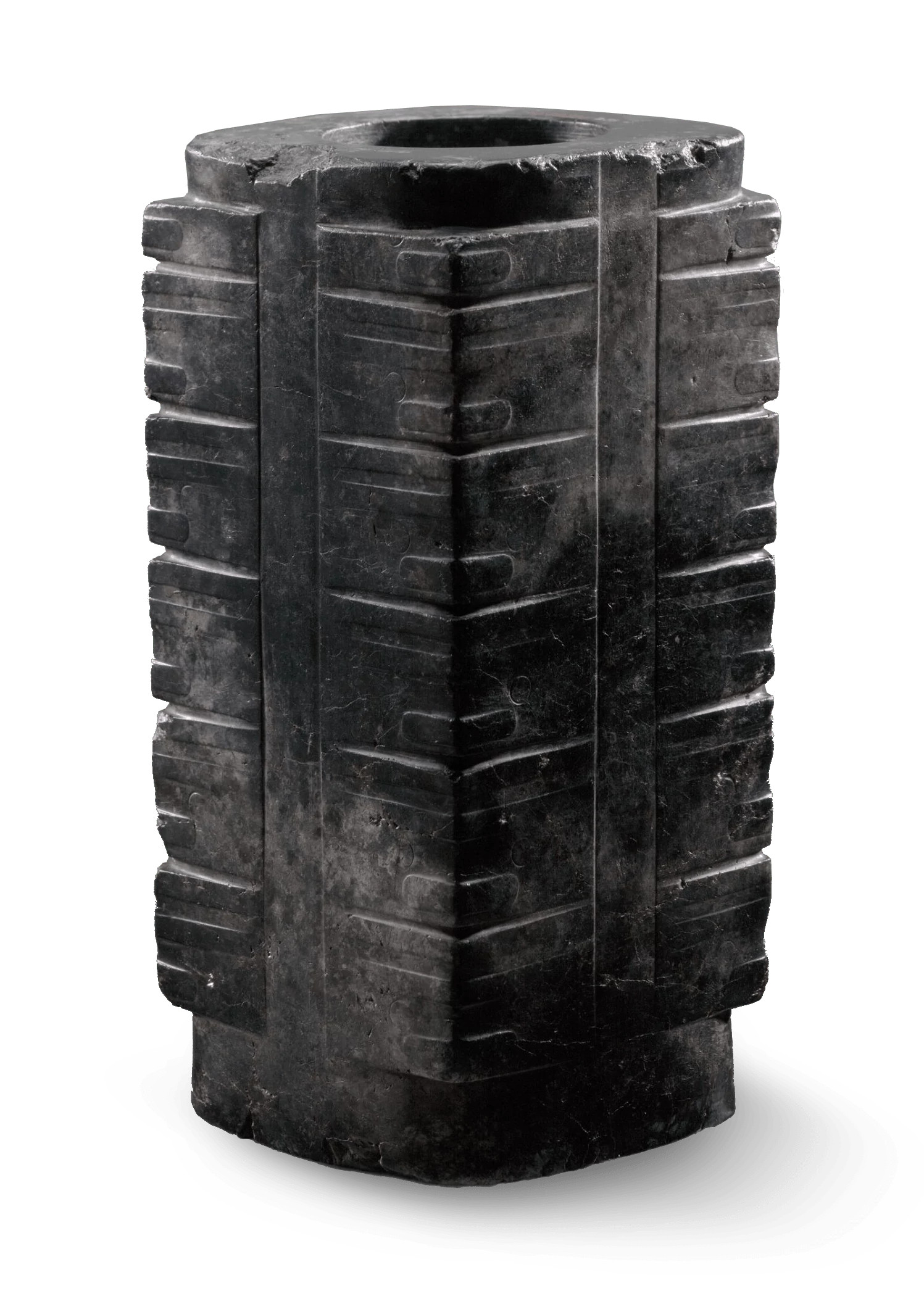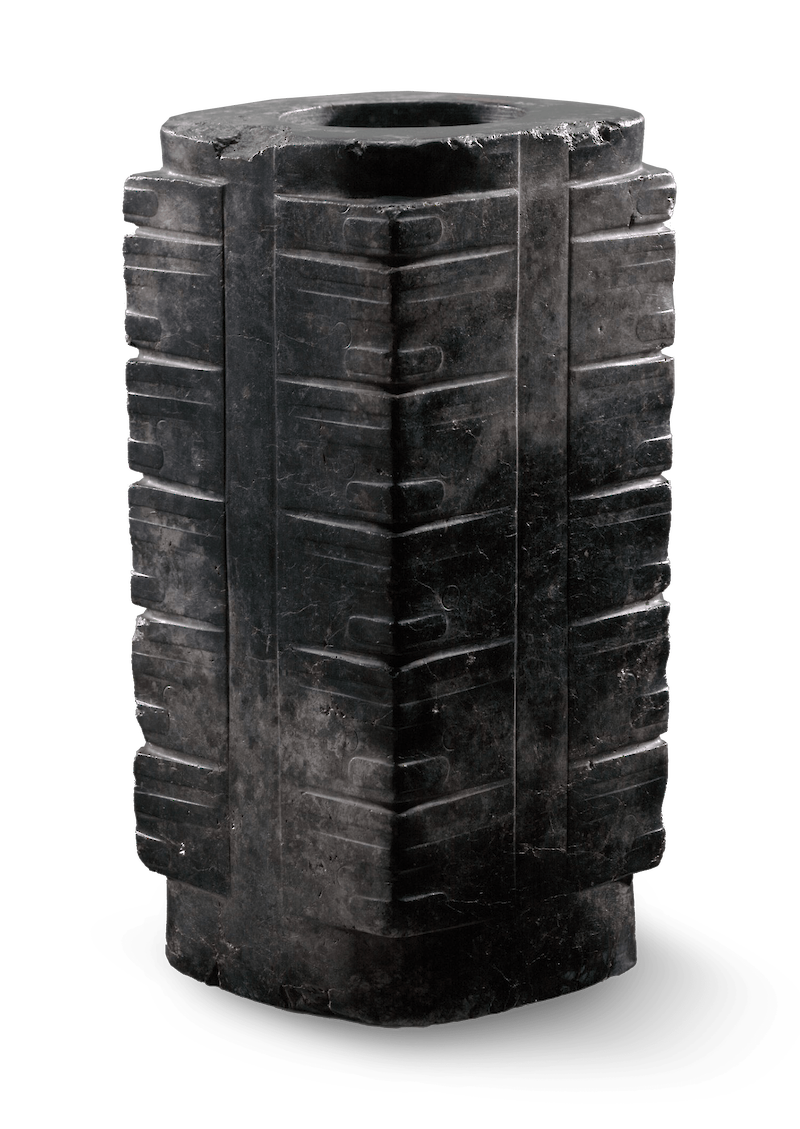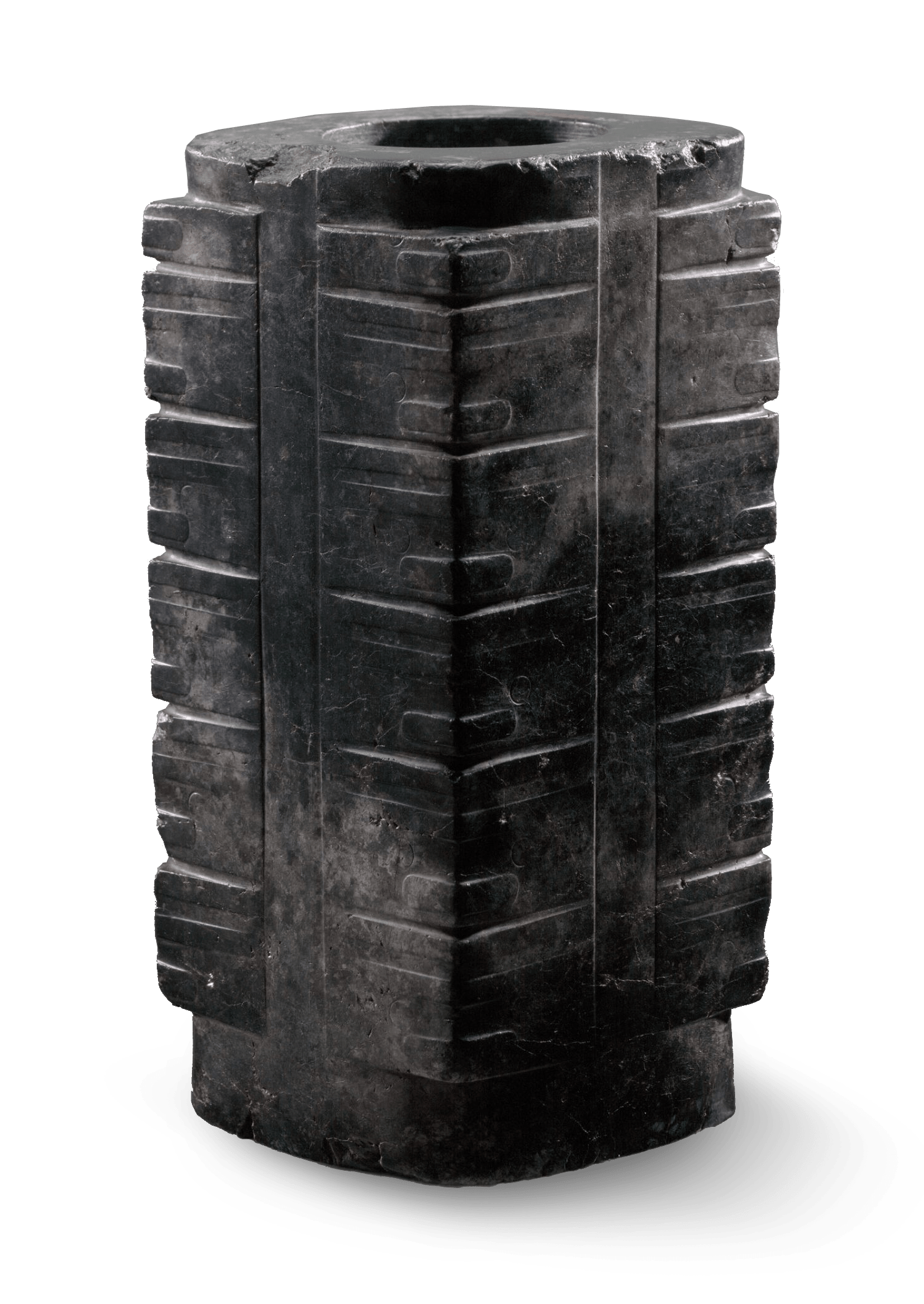


Jade cong are among the most enigmatic Neolithic artifacts. Cong are found ringed around bodies found in China’s Liangzhu grave sites. No language remains from the Liangzhu culture, so we don't know what meaning the cong had, but if you look closely, each outer edge is inscribed with rows of stylized faces.
Cong were extraordinarily difficult to create, since Jade cannot be split and had to be sanded to a smooth flat surface. This cong follows a common pattern, being hexagonal, with a round hollow core, with a slight taper from top to bottom. We don't know what cong, and their sister artifacts, bi, were used for, but their use in burials and their apparent lack of function imply a ritual use among China’s neolithic people.
